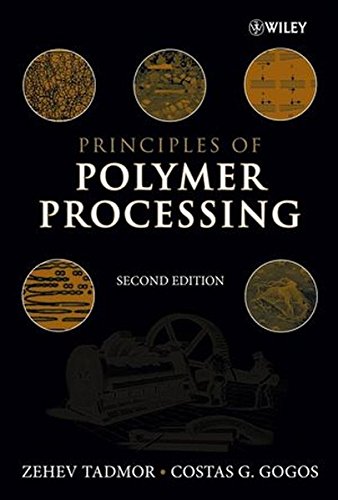

Most ebook files are in PDF format, so you can easily read them using various software such as Foxit Reader or directly on the Google Chrome browser.
Some ebook files are released by publishers in other formats such as .awz, .mobi, .epub, .fb2, etc. You may need to install specific software to read these formats on mobile/PC, such as Calibre.
Please read the tutorial at this link: https://ebookbell.com/faq
We offer FREE conversion to the popular formats you request; however, this may take some time. Therefore, right after payment, please email us, and we will try to provide the service as quickly as possible.
For some exceptional file formats or broken links (if any), please refrain from opening any disputes. Instead, email us first, and we will try to assist within a maximum of 6 hours.
EbookBell Team

0.0
0 reviewsThoroughly revised edition of the classic text on polymer processing The Second Edition brings the classic text on polymer processing thoroughly up to date with the latest fundamental developments in polymer processing, while retaining the critically acclaimed approach of the First Edition. Readers are provided with the complete panorama of polymer processing, starting with fundamental concepts through the latest current industry practices and future directions. All the chapters have been revised and updated, and four new chapters have been added to introduce the latest developments. Readers familiar with the First Edition will discover a host of new material, including: * Blend and alloy microstructuring * Twin screw-based melting and chaotic mixing mechanisms * Reactive processing * Devolatilization--theory, mechanisms, and industrial practice * Compounding--theory and industrial practice * The increasingly important role of computational fluid mechanics * A systematic approach to machine configuration design The Second Edition expands on the unique approach that distinguishes it from comparative texts. Rather than focus on specific processing methods, the authors assert that polymers have a similar experience in any processing machine and that these experiences can be described by a set of elementary processing steps that prepare the polymer for any of the shaping methods. On the other hand, the authors do emphasize the unique features of particular polymer processing methods and machines, including the particular elementary step and shaping mechanisms and geometrical solutions. Replete with problem sets and a solutions manual for instructors, this textbook is recommended for undergraduate and graduate students in chemical engineering and polymer and materials engineering and science. It will also prove invaluable for industry professionals as a fundamental…